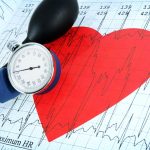The Anxiety Talk
There are no easy ways to talk yourself around anxiety, it
is something that demands to be felt and felt intensely at times. Sure, the
nomenclature we’ve assigned to anxiety is broad, but a magnitude and duration
of anxiety enough to paralyze your entire day and do so day after day, is
something becoming more and more common in the United States. The prevalence of
people suffering is growing, and yes, part of it can be attributed to greater
awareness and education and the success of anti-stigma work in popular culture,
but if you look at the world around you there is cause for anxiety. It’s an
issue with deep roots in society. 40 million Americans suffer from anxiety
disorders1, a number that continues to rise yearly.
While a lot of the causes of anxiety disorder require deep
and wholistic care to treat, there are very necessary coping skills with
concrete effects that can impact your life if you suffer from anxiety. And
while this might seem silly, the most effective tool I’ve encountered in
dealing with present and excessive symptoms of anxiety, is patterned breathing
exercises. It’s not a panacea, it won’t effectively treat the disorder, but it
will help reduce your symptoms to a level where you can operate and then
perhaps, if necessary, seek a greater level of care. Anxiety can often be a fleeting
thing and controlling it might deflate it for a period as well. Each individual
situation is unique, but patterned breathing is a potential coping skill
available if ever you find it useful to implement.
Apart from being a coping skill recommended by therapists,
there is also medical evidence suggesting that patterned breathing enacts
physiological changes that can counteract symptoms of anxiety. A study in
Frontiers found:
“Slow breathing techniques promote autonomic changes
increasing Heart Rate Variability and Respiratory Sinus Arrhythmia paralleled
by Central Nervous System (CNS) activity modifications. EEG studies show an
increase in alpha and a decrease in theta power. Anatomically, the only
available fMRI study highlights increased activity in cortical (e.g.,
prefrontal, motor, and parietal cortices) and subcortical (e.g., pons,
thalamus, sub-parabrachial nucleus, periaqueductal gray, and hypothalamus)
structures. Psychological/behavioral outputs related to the abovementioned
changes are increased comfort, relaxation, pleasantness, vigor and alertness,
and reduced symptoms of arousal, anxiety, depression, anger, and confusion2.”
The slow breathing technique re-patterned heart rhythms and
brainwaves and effectively implemented positive psychic effects. The actual
practice is described by Medline as this3:
The following
steps should all be carried out in the cycle of one breath:
1. First,
let your lips part. Make a whooshing sound,
exhaling completely through your mouth.
2. Next,
close your lips, inhaling silently through your
nose as you count to four in your head.
3. Then,
for seven seconds, hold your breath.
4. Make
another whooshing exhale from your mouth for eight
seconds.
This, when carried out for anywhere from 30 seconds to a
minute multiple times a day will effectively lower your heart rate and reduce
symptoms of anxiety, even in acute onset settings.
Written by Jeremiah Ockunzzi, courtesy of Dr. Bart
Rademaker, MD.
1) https://adaa.org/understanding-anxiety/facts-statistics
3) https://www.healthline.com/health/4-7-8-breathing#How-to-do-it-


